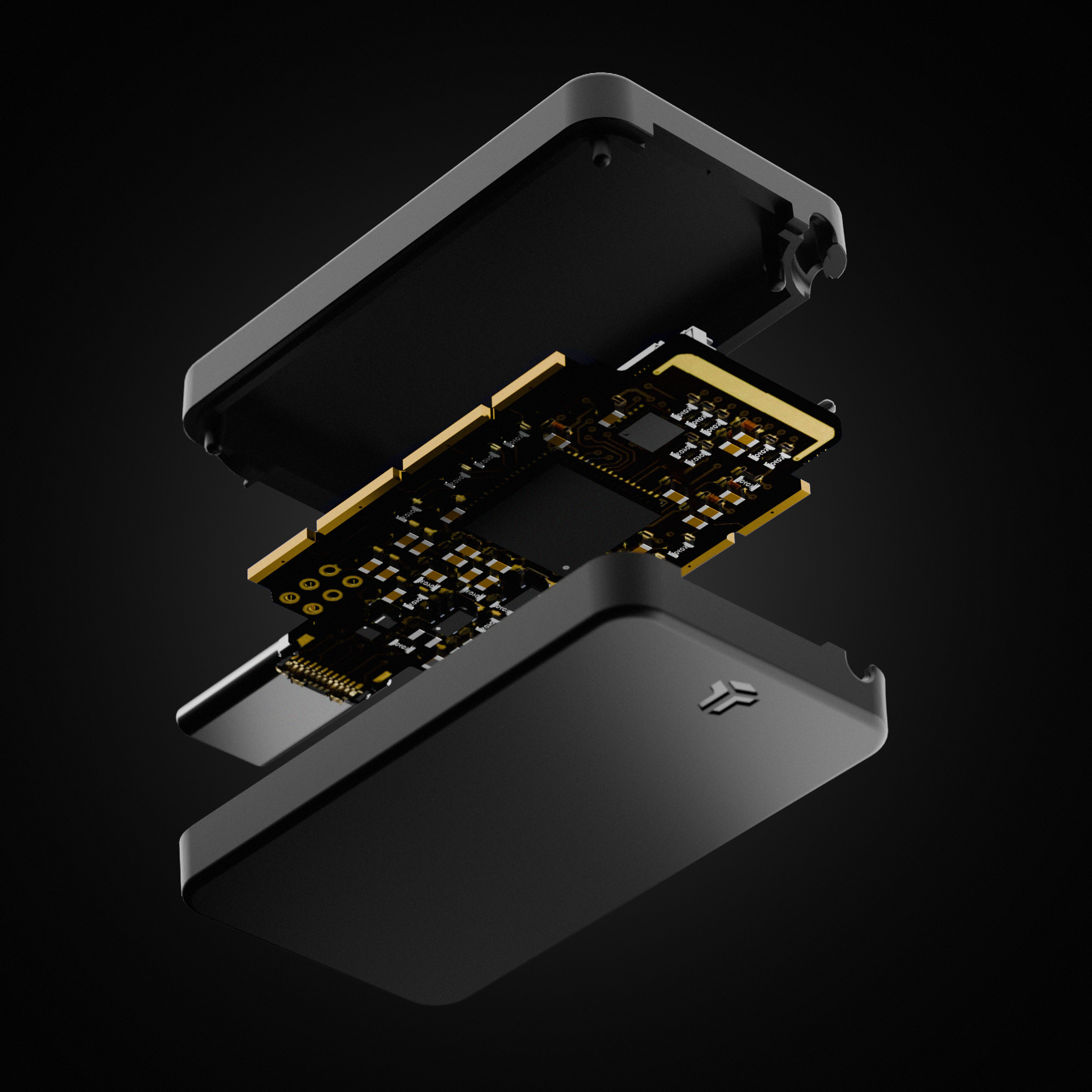Optimism vs Arbitrum: Key Differences

In the rapidly evolving landscape of decentralized finance (DeFi), the debate over Optimism vs Arbitrum has started making the rounds. As Ethereum faces challenges related to scalability and transaction costs, Layer-2 solutions like Arbitrum and Optimism have emerged as viable alternatives to enhance the efficiency of blockchain transactions. Both platforms aim to alleviate congestion on the Ethereum network, but they do so through distinct technological approaches and features. This article will explore the key differences between Arbitrum and Optimism, helping you make an informed decision about which solution best meets your needs in the DeFi space. Understanding Layer-2 Solutions Before diving into the Arbitrum vs Optimism debate, it’s essential to understand what layer-2 solutions are. These are protocols built on top of a blockchain, like Ethereum, to enhance its scalability and efficiency. They help alleviate congestion on the main blockchain by processing transactions off-chain and then reporting the results back to the main chain. This approach reduces the load on the primary network, leading to faster and cheaper transactions. Related: Layer 1 vs Layer 2 Blockchains: Key Differences and Promising Use Cases Explained Layer-2 solutions are pivotal in ensuring that blockchain networks can handle increased activity without compromising on performance. By offloading transactions from the main Ethereum chain, these solutions not only reduce congestion but also lower transaction costs, making blockchain more accessible to a broader audience. Moreover, layer-2 solutions often come with enhanced security features, leveraging the security model of the main chain while providing additional safeguards. This balance between scalability and security makes layer-2 solutions an attractive option for developers and users alike. Arbitrum: An Overview Arbitrum is a layer-2 scaling solution developed by Offchain Labs. It’s designed to improve the efficiency of Ethereum by enabling high-throughput, low-cost smart contracts. Arbitrum achieves this through a technology called Optimistic Rollup. Arbitrum has been at the forefront of layer-2 solutions, offering a robust platform for developers to create scalable applications. Its architecture is designed to handle a large number of transactions without compromising on security or speed. The platform’s development team has prioritized user experience, ensuring that both developers and end-users find it intuitive and efficient. As a result, Arbitrum has quickly gained a reputation as a reliable and effective solution for scaling Ethereum applications. Also read: Sony Block Solutions Labs Unveils Soneium: A Groundbreaking Layer-2 Blockchain Key Features of Arbitrum Optimistic Rollup: This technology allows Arbitrum to batch multiple transactions into a single one, which is then recorded on the Ethereum mainnet. By doing so, it reduces the amount of data that needs to be stored on the main blockchain, thus improving efficiency. The rollup mechanism is designed to ensure that transactions are processed quickly, minimizing delays and enhancing the overall user experience. EVM Compatibility: Arbitrum is fully compatible with the Ethereum Virtual Machine (EVM), meaning that developers can easily port their Ethereum-based dApps to Arbitrum without significant modifications. This compatibility ensures that existing Ethereum tools and applications can be seamlessly integrated into the Arbitrum ecosystem, providing developers with a familiar environment to work in. Security: Since Arbitrum’s rollup technology relies on Ethereum’s security, users can trust the platform to maintain the integrity and safety of their transactions. The platform employs advanced cryptographic techniques to ensure that all transactions are secure and tamper-proof, giving users peace of mind when conducting business on the network. Advantages of Using Arbitrum Lower Gas Fees: By processing transactions off-chain, Arbitrum significantly reduces gas fees compared to using Ethereum directly. This reduction in cost makes it an attractive option for users looking to save on transaction fees while still benefiting from Ethereum’s robust network. Fast Transaction Speeds: Users experience quicker transaction confirmations due to the reduced load on the Ethereum network. The platform’s efficient processing mechanism ensures that transactions are completed in a timely manner, enhancing the overall user experience and making it suitable for high-volume applications. Also read: Is Ethereum the Next Amazon? Optimism: An Overview Optimism is another layer-2 solution focused on enhancing Ethereum’s scalability. Similar to Arbitrum, it uses Optimistic Rollups to achieve its objectives. Optimism has positioned itself as a leading player in the layer-2 space by focusing on user-friendly solutions that cater to both developers and end-users. The platform’s emphasis on simplicity ensures that even those new to blockchain technology can easily navigate and utilize its features. Optimism has been proactive in building partnerships and collaborating with various DeFi projects, further cementing its position as a versatile and reliable layer-2 solution. Key Features of Optimism Optimistic Rollup: Like Arbitrum, Optimism batches transactions and posts them on the Ethereum mainnet, minimizing on-chain data usage. This approach not only reduces congestion but also ensures that transactions are processed efficiently, making it a viable option for applications requiring high throughput. EVM Equivalence: Optimism offers EVM equivalence, making it straightforward for developers to migrate their applications from Ethereum to Optimism without changing their code. This feature ensures that developers can leverage existing Ethereum infrastructure and tools, facilitating a smooth transition to the Optimism platform. Security Model: Optimism’s security model is also reliant on Ethereum, ensuring that transactions are processed with the same level of security as on the mainnet. By leveraging Ethereum’s battle-tested security protocols, Optimism provides users with a secure environment for their transactions and applications. Advantages of Using Optimism Reduced Transaction Costs: Optimism reduces the costs associated with executing smart contracts on Ethereum by processing them off-chain. This cost-effectiveness is particularly appealing for developers and businesses looking to deploy large-scale applications without incurring prohibitive fees. Increased Throughput: The platform allows for a higher number of transactions per second compared to Ethereum alone, enhancing the user experience. This increased capacity makes Optimism suitable for applications that require rapid transaction processing, such as gaming and DeFi platforms. Also read: How Much Will 1 Ethereum Be Worth in 2030? Predictions and Insights on its Future Value Technology and Implementation While both platforms use Optimistic Rollups, their implementation differs slightly. Arbitrum employs a more flexible rollup technology that allows for more complex computation off-chain, while Optimism focuses on simplicity and ease of use. This distinction means that Arbitrum might be better suited for applications requiring advanced computational capabilities, whereas Optimism offers a straightforward solution for more standard use cases. The choice between the two often comes down to the specific requirements of the application being developed. Developers must consider whether they need the additional computational flexibility offered by Arbitrum or if they prefer the streamlined approach provided by Optimism. Understanding these technological nuances is crucial for making an informed decision. EVM Compatibility vs Equivalence Arbitrum’s full EVM compatibility means that it can support a broader range of Ethereum applications with minimal changes. On the other hand, Optimism’s EVM equivalence ensures that existing Ethereum tools work seamlessly, but it might require some adaptation for more complex dApps. This subtle difference can have significant implications for developers, particularly those working on intricate applications that demand high levels of customization. Choosing between compatibility and equivalence often depends on the complexity of the dApp and the developer’s familiarity with the Ethereum ecosystem. Arbitrum’s compatibility may appeal to those looking for maximum flexibility, while Optimism’s equivalence might be ideal for developers seeking a hassle-free transition from Ethereum. Community and Ecosystem Both Arbitrum and Optimism have strong developer communities and are supported by numerous DeFi platforms. However, the size and engagement of these communities can vary, influencing the speed of innovation and adoption. A vibrant community can provide valuable support, resources, and feedback, facilitating the development and deployment of new applications. The ecosystem surrounding each platform also plays a crucial role in its success. Partnerships with other DeFi projects, exchanges, and service providers can enhance a platform’s capabilities and appeal. Developers and users should consider the ecosystem’s maturity and the level of community involvement when selecting a layer-2 solution. Also read: EVM Meaning Crypto: Decoding Ethereum’s Virtual Machine Which Platform Is Right for You? Choosing between Arbitrum and Optimism depends on your specific needs and priorities. Considerations for Developers If you’re a developer looking for a platform that offers more flexibility in terms of computation, Arbitrum might be the better choice. Its full EVM compatibility allows for a seamless transition from Ethereum, enabling you to leverage existing code without significant modifications. This flexibility can be particularly advantageous for complex applications that require extensive customization and advanced features. On the other hand, if ease of integration and a straightforward development process are your primary concerns, Optimism’s EVM equivalence could provide a more suitable environment. The platform’s simplicity can help streamline the development process, allowing you to focus on building innovative applications without worrying about compatibility issues. Considerations for Users For users, both platforms offer lower fees and faster transactions compared to Ethereum. However, if you’re looking for a platform with a strong emphasis on simplicity and ease of use, Optimism might be more appealing. Its user-friendly approach ensures that even those new to blockchain technology can quickly adapt to the platform’s features. Alternatively, if you’re interested in using a platform that supports a wide range of applications and offers more flexibility, Arbitrum could be the better option. Its comprehensive compatibility with Ethereum ensures that you can access a diverse array of dApps and services, enhancing your overall experience. Considerations for Businesses Businesses considering deploying their dApps on a layer-2 solution should evaluate the specific requirements of their applications. If your dApp requires more complex computations, Arbitrum’s approach might be more suitable. Its ability to handle advanced computational tasks can be a significant advantage for businesses with demanding application needs. Conversely, if you’re looking for straightforward integration, Optimism’s EVM equivalence could be beneficial. Its streamlined approach can simplify the deployment process, reducing time-to-market and allowing businesses to focus on growth and innovation. Also read: Top Blockchain Programming Languages to Learn The Future of Layer-2 Solutions As Ethereum continues to evolve, the role of layer-2 solutions like Arbitrum and Optimism will become increasingly important. These platforms not only provide immediate scalability improvements but also pave the way for more robust and efficient blockchain applications. By offloading transactions from the main chain, layer-2 solutions enable Ethereum to continue growing and supporting a diverse range of applications and use cases. The ongoing development and innovation within the layer-2 space promise to bring even more enhancements and features in the future. As these platforms mature, they will likely introduce new technologies and tools that further improve scalability, security, and user experience. Staying informed about these advancements will be crucial for developers, businesses, and users looking to leverage the full potential of blockchain technology. By understanding the key differences and advantages of Arbitrum and Optimism, users and developers can make informed decisions on which platform best meets their needs. As the DeFi landscape continues to grow, staying informed about these technologies will be crucial for anyone involved in the blockchain space. The right choice of layer-2 solution can significantly impact the success of your project, ensuring that you can capitalize on the opportunities offered by decentralized finance. In conclusion, both Arbitrum and Optimism offer valuable solutions to Ethereum’s scalability challenges. Whether you prioritize flexibility, simplicity, or cost-efficiency, there’s a layer-2 solution that can help you achieve your goals in the ever-expanding world of decentralized finance. As the blockchain ecosystem continues to evolve, these platforms will play a vital role in shaping the future of digital finance, enabling new possibilities and innovations.


